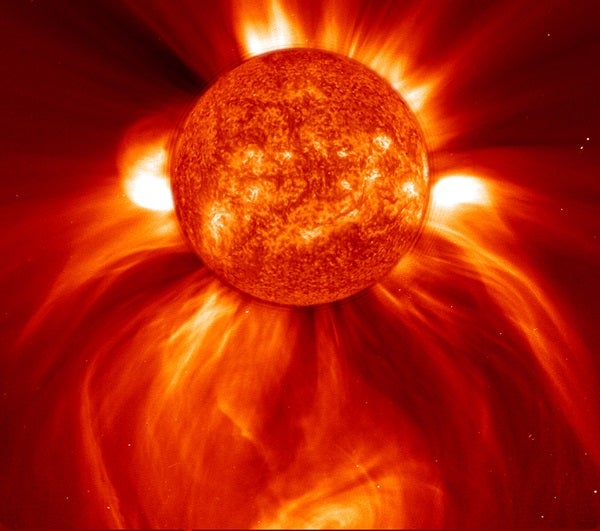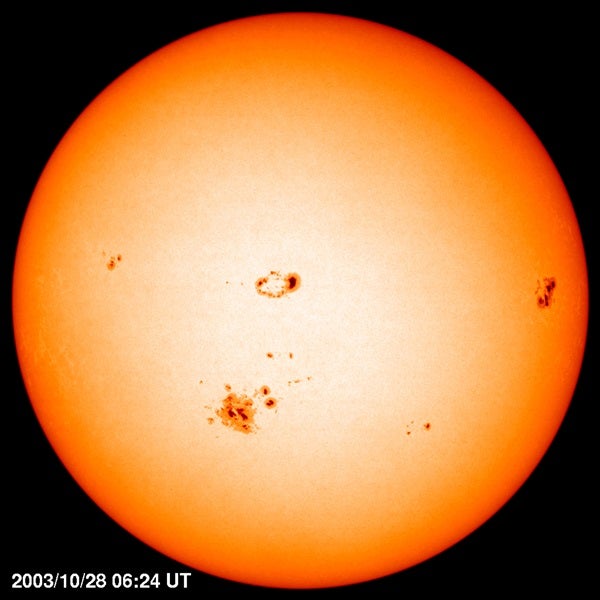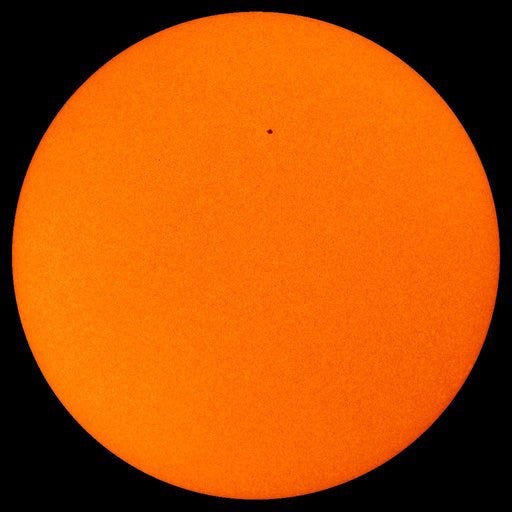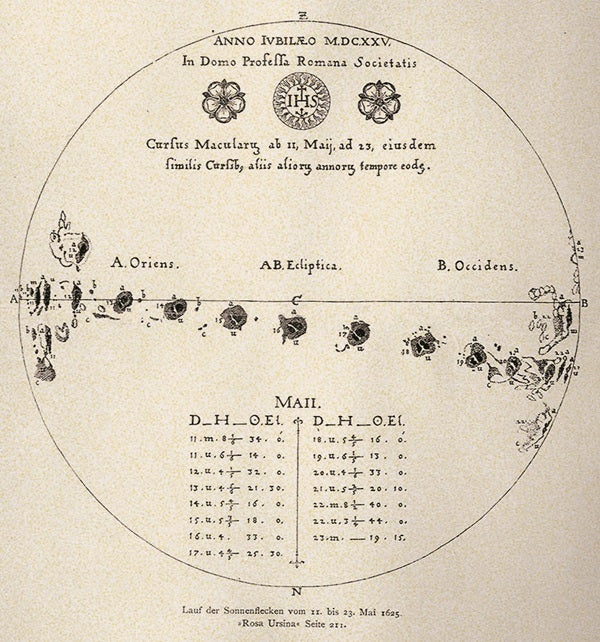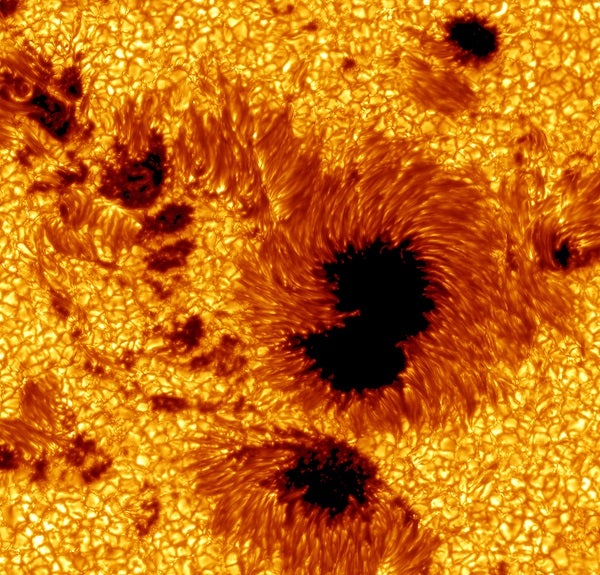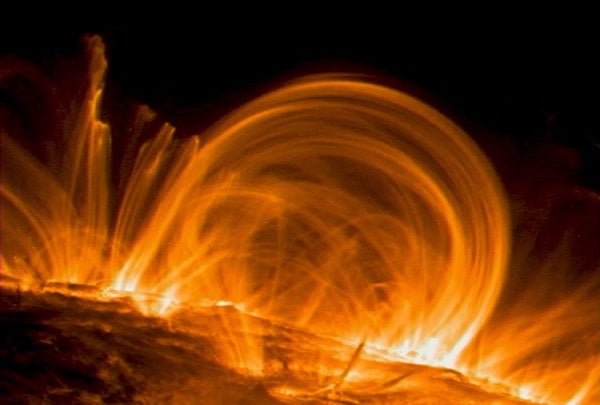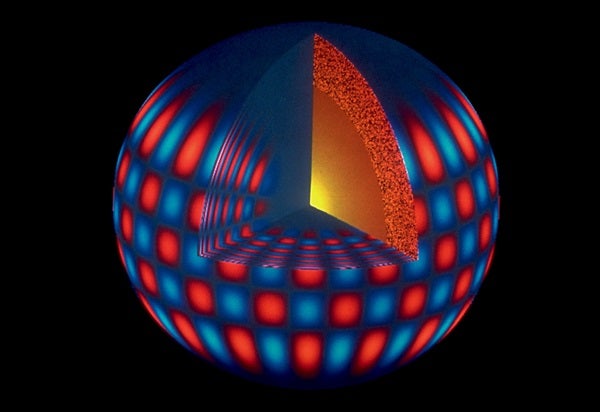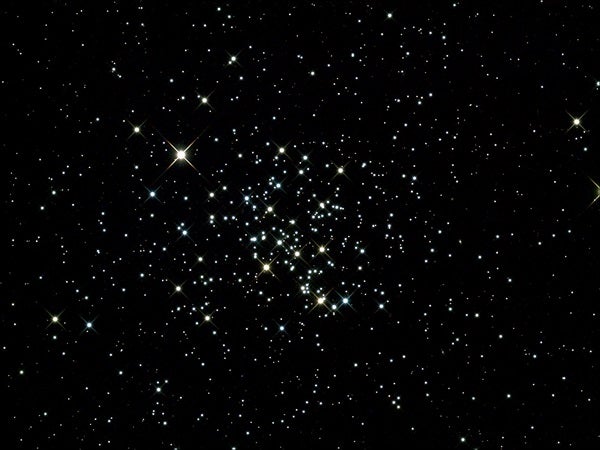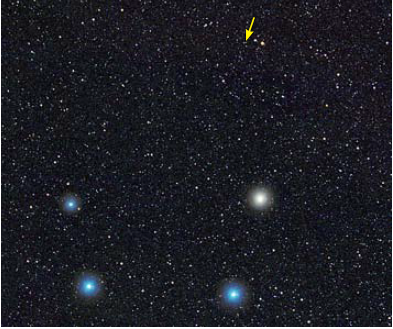I’m OK. You’re OK. But the Sun? It could be having a midlife crisis.
Like aging parents anxiously taking stock of their adult offspring, solar physicists must continually tweak their theoretical models to explain our middle-aged star’s sometimes confounding behavior. Most solar researchers confidently declare our Sun to be perfectly normal; average even. But then in the next breath, they protectively argue that the Sun is unique or peculiar in its own right.
Among the questions these researchers continually ask are: How normal is the Sun for a star of spectral type G2? Is its behavior fine-tuned for life, or is our evolution here something of a fluke? And if the Sun is average, where are all its analog among the hundreds of billions of stars in our galaxy?
For decades, astronomers have hunted for a solar twin that would best match the chemical and astrophysical characteristics of our own aging star. By definition, a solar analog is a spectral type G star of any age. By contrast, a solar twin must be nearly the same age. It also must have a mass, chemical composition, and temperature nearly identical to the Sun’s.
Spots before our eyes
In time, our true stellar soul mates will provide a basis of comparison to help scientists fine-tune their current solar models. Until then, a large part of our solar-learning curve lies in the varying magnetic forces that surround the Sun’s 11-year sunspot cycles.
During the past 100 years alone, observers have reported between 40,000 and 50,000 sunspots. These numbers wax and wane with a fairly steady 11-year period. Yet the Sun’s latest sunspot cycle, solar cycle 24, began almost a year late. In June and July of 2009, some anemic sunspot activity finally kicked in after a 2008 in which more than 260 days had no visible sunspots.
“Most of 2008 and 2009 were as dead as a doornail,” says astronomer Gary Chapman, director of California’s San Fernando Observatory, who has been running solar observations since 1986. “A typical sunspot is 2 or 3 times the size of Earth. We’re seeing one or two tiny ones a month, smaller than Earth. During a normal solar maximum, you would have dozens of sunspots on any given day.”
Records of sunspots date to the 4th century b.c. But in 1610, Galileo observed them in detail as they moved across the solar sphere. That happened some 30 years before the sunspots all but disappeared during the Maunder minimum, a 70-year period of diminished solar activity that lasted from 1645 to 1715.
Then, 2 centuries later, German amateur astronomer Heinrich Schwabe made an extraordinary discovery during a lengthy search for a planet inside Mercury’s orbit. Schwabe noticed that his observations of sunspots seemed to show a peak about once a decade. For obscure historical reasons, astronomers slapped the label of “solar cycle 1” on an uneventful cycle that peaked in 1760.
Since then, observers have watched 23 cycles come and go. “In March 2007, I predicted cycle 24 would be at least a year late,” says UCLA solar physicist Roger Ulrich, who also began observing the Sun in 1986. “We’ve beat the 1905 extended solar minimum. The end of the Maunder minimum was the last time we had a cycle this long. But I think we’re [now] coming into a period of rising solar activity.”
This anomalously long solar minimum raises the question of whether solar scientists actually understand the Sun’s inner workings. “If you don’t worry about the magnetic fields, we do,” says Ulrich. “The magnetics is where the big puzzle is these days.”
Solar scientists understand that solar magnetic fields start in the Sun’s interior. Dynamic flows of plasma generate electrical currents that give rise to the Sun’s active dynamo. This internal process gives birth to magnetic fields.
The Sun concentrates these fields, twisting and turning them in the process. Such distorted fields inhibit the ability of rising and falling gas cells to transport energy, a process scientists call convection. Where the magnetic fields break through the solar surface, or photosphere, temperatures can be as much as 2700° Fahrenheit (1500° Celsius) cooler than their surroundings. Such a region radiates less energy and looks darker — and we see a sunspot.
“According to the dynamo theory,” says Ulrich, “the polar field generates the toroidal [circular] field, and the toroidal field generates the sunspots. The toroidal field is like a big rubber band wrapped up inside the Sun. It has kinks that pop up as sunspot pairs.”
But that’s not all that’s happening just beneath the Sun’s surface. East-west jet streams, known as torsional oscillations, slowly migrate from the Sun’s middle latitudes to the equator and its poles.
Normally, their migrations take place over a 17-year period. But in 2009, solar physicists Rachel Howe and Frank Hill at the National Solar Observatory (NSO) in Tucson, Arizona, found that the zonal flow migration of the most recent cycle had slowed. “This jet stream is moving down toward the equator at a slower rate than the previous solar cycle,” says Hill, “and the extra length of time it’s taking is equivalent to the extended solar minimum. We conclude that they’re related.”
A new Maunder minimum?
Whether this jet stream is causing the extended solar minimum remains open to debate. Even so, stellar astronomer Mark Giampapa, deputy director of NSO, is one of the first solar researchers who thinks we may be entering a long-period, Maunder-type minimum, or a so-called grand solar minimum.
“My gut feeling is that we’re heading into the next Maunder minimum,” says Giampapa. “Our observational sunspot data archive since the 1980s points to a long-term trend of decreasing mean [average] magnetic field strengths in sunspots.” Could these changes affect Earth in some way? After all, Giampapa notes that mean global temperatures have been declining from their maximum in 1998.
Hill doesn’t think we’re going into a Maunder minimum, although he suggests such long-term minima could originate from random dynamo action at the base of the Sun’s convection zone.
Even if we face an extended minimum, Hill doesn’t think it would have a major effect on Earth. “I would guess a grand minimum would change global temperatures by a degree at the most,” he says. But some solar researchers believe Earth’s own climate mechanisms could amplify any temperature changes in ways that solar physicists and climatologists still don’t completely understand.
Steve Tobias, an applied mathematician at the University of Leeds in the United Kingdom, says “differential rotation” — the fact that the solar atmosphere rotates at different speeds at different latitudes and depths — generates the toroidal field that leads to the formation of sunspots. Changes in differential rotation could, in turn, weaken the solar dynamo. This could instigate an interval where the formation of active regions simply switches off, says Tobias. This also might modify the solar dynamo and cause the Sun to go through a Maunder-type minimum.
Looking to the stars
No matter what causes such events, Giampapa says he sees tentative evidence for Maunder-type cycles in some of thesolar analogs he’s observed. Giampapa and his Italian colleagues studied the open star cluster M67, located some 2,700 light-years from Earth in the constellation Cancer. If scientists confirm this trend, he says, it would indicate that such grand minima occur in Sun-like stars only 10 to 15 percent of the time.
“There is no doubt that the Sun experienced many more Maunder-type minima during the past 10,000 years,” says Jürg Beer, a physicist at Switzerland’s Eawag Research Institute. His team used the radioactive elements Beryllium-10 and Carbon-14 found in polar ice cores and tree rings to reconstruct solar history over the past 10,000 years. “The minima themselves do not show a clear periodicity. However, they seem to be clustered with a [spacing] of about 200 years.”
But the Sun’s magnetics, which drive both short-term solar magnetic cycles and perhaps even grand minima, present more of a puzzle. That’s why observers and theorists alike need to compare the Sun with close solar analogs. So far, scientists have turned up only a couple dozen. The trick is not in finding stars that make a nice chemical match. Such stars are fairly common. But researchers also want to find stars with similar ages, masses, and magnetic cycles as the Sun.
One of Earth’s nearest neighbors, Alpha Centauri A, is a true solar analog. It belongs to a triple star system that lies only 4.36 light-years away. With an estimated age of 6 billion years, however, it’s about 1.5 billion years older than the Sun.
But Alpha Centauri A is just one star. Giampapa’s team is studying 15 solar analogs in M67 with the European Southern Observatory’s Very Large Telescope in Chile. M67 offers a unique laboratory to search for solar analogs because its stars’ chemical compositions and ages (roughly 3.5 to 4.8 billion years old) are nearly the same as the Sun’s. Giampapa says that after 6 years of observations, none of the stars his team has observed appears to have cycles that last less than 6 years.
“I’m seeing some brightness variability data that suggests the Sun might be more quiescent than most stars,” says Giampapa. “But cycles in Sun-like stars in M67 could be quite similar to our Sun.”
And a little quiescence might not be so bad. “We’re near the end of our ropes here now,” says astronomer Edward Guinan of Villanova University in Pennsylvania. That’s because even though the Sun is only about halfway through its 10-billionyear hydrogen-burning lifetime, its increasing luminosity will make Earth uninhabitable much sooner — perhaps within the next 500 million years.
A better place for life?
Because of its relatively short life, the Sun may not be the best candidate star for supporting planets with life. Guinan says that spectral type K stars may be better hosts. Such stars possess about 80 percent of the Sun’s mass and burn cooler, so they fuse hydrogen stably for much longer. K stars have fixed habitable zones, regions where liquid water could exist on a planet’s surface. Theoretically, intelligent life there could survive for 40 to 50 billion years.
Even cooler M stars make up some 75 percent of the galaxy’s inhabitants. Although M stars live a long time, they glow dimly. Their habitable zones lie so close in that any planet orbiting within one would be tidally locked, with one side continuously facing the star and the other in constant darkness.
K and M stars have a further liability. Both types have more efficient dynamos than the Sun, so they produce more magnetic energy. Strong magnetic fields pose more danger than no magnetic fields, says Ulrich. He notes that the largest recorded eruption of charged particles from the Sun, a so-called coronal mass ejection, came during the 1859 solar superstorm. “The aurorae were so bright that people camping in Colorado awoke and decided it was dawn,” says Ulrich. “Sparks flew out of all the telegraph instruments.”
Such extraordinary events demonstrate how volatile our Sun can be. It also gives pause to wonder: Does the Sun’s evolution and its often tumultuous solar cycles qualify it as normal?
To answer this question, astronomers need to probe the interiors of the Sun and other stars. The science of helioseismology studies the Sun’s interior structure and dynamics by measuring sound waves emanating from our star. The best observations so far have come from the Global Oscillation Network Group (GONG).
An asteroseismological version of GONG — the Stellar Oscillations Network Group (SONG) — plans to study solar-like oscillations in nearby bright stars. This Danish-led international effort will link eight new telescopes spread over five continents, including the U.S. mainland and Hawaii.
The network will offer full-sky 24- hour observational coverage. SONG researchers hope the first prototype, located in the Canary Islands, will see first light by early 2011. Giampapa says SONG-like global networks are what scientists need to confirm whether these solar analogs are indeed operating on solar-type cycles and experience Maunder-type grand minima.
Find a solar twin
Meanwhile, astronomer Jorge Meléndez at Portugal’s University of Porto leads an international collaboration looking for solar twins. “My group has already studied about 75 percent of stars similar to the Sun in the whole Hipparcos million-star catalog,” says Meléndez. “Surprisingly, we see that the Sun is actually chemically different from most solar twins.”
That’s in part because our star is lacking in refractory elements — those that vaporize at high temperatures — says Meléndez. These missing elements probably formed dust, which then accreted into planetesimals and ultimately into the terrestrial planets: Mercury, Venus, Earth, and Mars. Meléndez notes that an estimated 15 percent of stars seem to have a chemical composition similar to the Sun’s, raising the possibility that such stars also may possess terrestrial planets.
Thus far, the closest to a solar twin Meléndez’s team has found is the obscure star HIP 56948. This 9th-magnitude object lies some 217 light-years from Earth in the constellation Draco.
But NASA’s Kepler mission should create an asteroseismological shift in the search for solar twins. During a 4-year period, Kepler will observe 100,000 stars in a single 100-square-degree field. The spacecraft’s instruments are sensitive enough to measure the passage of individual starspots across the disks of its stellar targets.
Travis Metcalfe, an astronomer at the High Altitude Observatory in Boulder, Colorado, predicts that over Kepler’s lifetime, the spacecraft will find at least 100 solar analogs. However, he emphasizes that the key to understanding the Sun in detail is the broader study of other stars. “There’s always the danger that if we study this one object in great detail, we’re just going to fine-tune our model to fit that one Sun,” says Metcalfe. “But that same model has to work for other stars.”
At the end of the Kepler mission, if not before, researchers should be able to partially settle our age-old quandary over what constitutes solar normality. And in the process, astronomers might just find a solar twin orbited by its own family of habitable terrestrial siblings.

